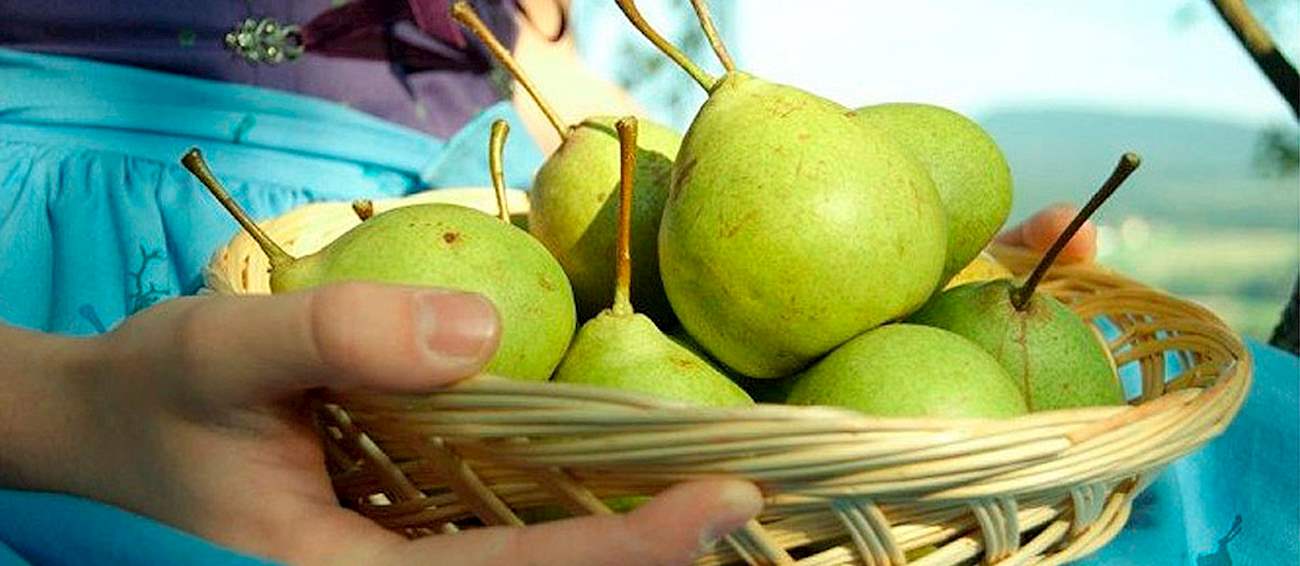Best Austrian Fruits (types and products) Types
Nestled along the banks of the Danube River, the Wachau Valley is home to some of Austria's oldest wineries and distilleries, one of the most prominent tourist destinations, and the country's largest fruit cultivation area, whose stunning landscapes are dominated by apricot orchards, particularly during blossom in spring and harvest in summer.
The exceptional flavor of Wachau apricots is directly influenced by the region's microclimate, especially the differences in temperature between day and night during the ripening phase. Twenty different Wachauer Marille cultivars are easily distinguished from other apricots by a special seal of quality that guarantees the origin, unique aroma, and rich flavor of these plump fruits.
For centuries, the Hirschbirne dominated the lush, green landscapes of the Austrian Pöllauer valley, where it fully adapted to local climate conditions. Today, Pöllauer Hirschbirne represents the staple of pear cultivation and stands as a symbol of both traditional orcharding and innovative industrial development.
However, the cultivation of Pöllauer Hirschbirne requires great patience, since it takes about ten years for the first yield. Whether enjoyed fresh or as Kletze (dried pears), fermented into wine or distilled into brandy, pressed into juice or boiled down to jam - the sugary and aromatic Hirsch pear is a true original, distinguished by a unique flavor.
Ribiselmarmelade is a traditional jam made from red currants, known as "ribisel" in Austrian German. This jam is celebrated for its bright, tart flavor and vibrant red color. The preparation involves cooking red currants with sugar until the mixture thickens to a jam-like consistency.
Ribiselmarmelade is often used as a spread on bread or pastries, and it can also serve as a filling for various desserts. Its tangy taste makes it a favorite for adding a touch of freshness to sweet dishes.
Kitseer marille refers to a group of apricot varieties that are traditionally grown in the Austrian municipality of Kittsee, in the District of Neusiedl am See, Burgenland. Apricot trees have been thriving in this region for many years, while the first mention of their extensive cultivation in Kittsee dates back to 1924, in the Kittseer Ortschronik.
Owing to the favorable Pannonian climate and the unique qualities of the soil, Kittsee apricots develop an intensely fruity aroma and excellent flavor. Often considered to be among the best apricot varieties in the country, the fully ripened fruits are typically harvested from the beginning to the middle or the end of July.
MAIN INGREDIENTS
Powidl, also known as porvidl, powidla, povidla, or powidel, is a traditional fruit preserve made from prune plums. It is popular in Central and Eastern Europe, particularly in Austria, the Czech Republic, Poland, and Hungary.
Unlike typical jams or marmalades, powidl is unique because it is prepared without any added sugar or gelling agents. The process involves cooking plums slowly for several hours to concentrate their natural sweetness and achieve a thick, spreadable consistency. The plums used in powidl are typically the Zwetschgen or Damsons variety and are usually harvested late in the season, often after the first frost, to ensure they are as sweet as possible.
Leithaberger edelkirsche are famous Austrian cherries that have been grown in the Leithaberg region since the 18th century. There are many varieties of these cherries (more than 15), most of them thin-skinned, bright red or brown. The warm climate and fertile soil make the area ideal for cherry-growing in the local countryside and neighboring vineyards.
The cherries are always hand-picked, using tall ladders. They're used in typical sweets, chutneys, jams, juices, and spirits, or in combinations with fish, lamb, and poultry. Unfortunately, nowadays, only 5000 cherry trees are left in the region (unlike 10-15,000 trees in the 19th century) because the prices are no longer lucrative.
TasteAtlas food rankings are based on the ratings of the TasteAtlas audience, with a series of mechanisms that recognize real users and that ignore bot, nationalist or local patriotic ratings, and give additional value to the ratings of users that the system recognizes as knowledgeable. TasteAtlas Rankings should not be seen as the final global conclusion about food. Their purpose is to promote excellent local foods, instill pride in traditional dishes, and arouse curiosity about dishes you haven’t tried.




